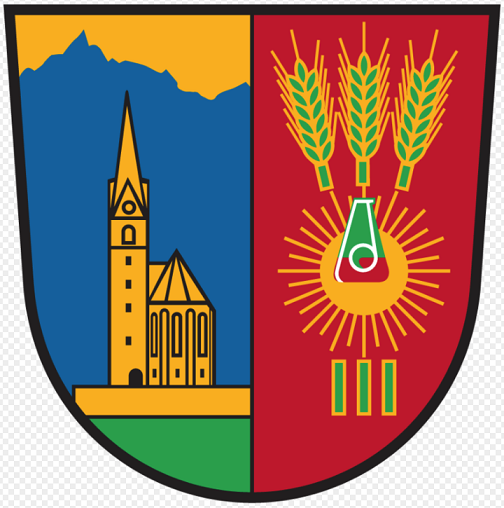
In Carinthia, Austria lies the beautiful municipality of Heiligenblut. Here, a religious relic of the past called the Flask of Holy Blood is said to reside.
Heiligenblut's location, geography and history

A view of Heiligenblut am Großglockner's surrounding countryside. Image Credit
Heiligenblut sits in a high valley within the Central Eastern Alps at Carinthia's northwest corner, bordering the city of Salzburg and state of Tyrol. Grossglockner, the highest mountain in Austria, towers over the township, with the Pasterze Glacier located nearby.

Grossglockner Mountain. Image Credit
Two other peaks, Johannisberg and the Fuscherkarkopf, can be seen to the north, and Lake Kachelsee is found to the west.
Dating back to ancient times and continuing through the Middle Ages, the commoners of now southern Austria practiced Alpine transhumance, an agricultural method of moving grazing livestock from one valley to the next during winter and then relocating them to mountainous pastures during the summer. This technique drastically shaped the landscape in the Alps, whereas if it had not taken place, many of the areas below 7,000 feet would contain an abundance of trees, much like what is seen at higher elevations.

Cattle seen grazing in an open field near the Austrian Alps. Image Credit
Both farmers and ranchers used Heiligenblut as a pit stop to rest their weary bones and provide fresh water to the cattle before moving on to their next destination.
Gold mining was also common in the area, as the many rich veins of ore served as a source of income and wealth to various rulers and empires throughout the ages.
In the mid-1800s, Archduke John of Austria built a mountain hut beneath nearby Hochtor Pass. A century later, Grossglockner Road was constructed to bridge the gap between Heiligenblut and other neighboring towns and cities, thus increasing tourism exponentially which eventually resulted in the municipality becoming a major mountaineering resort.
The Legend of Briccius
In 1271, Bricciuskapelle, a modest chapel, was built in the Duchy of Carinthia (now modern-day Heiligenblut). Rumors say a flask of holy blood - an extremely rare relic containing the blood of Jesus Christ - is still stored there to this day.

Briccius Chapel (Bricciuskapelle) by Edward Theodore Compton. Image Credit
The flask itself was placed in a secure tabernacle (i.e. a bolted-down locked box often seen in many Christian churches).

Photo of a tabernacle. Image Credit
But, how did the flask make its way to Heiligenblut?
Legend tells of a Danish knight named Frederick Briccius who was stationed in Constantinople. Briccius served under Constantine VII, the fourth Emperor of the Macedonian Dynasty of the Byzantine Empire.
Briccius was tasked with transporting a sacred relic obtained during the Crusades from the Holy Land to a more rustic setting.

Depiction of a medieval crusader traveling on horseback. Image Credit
After retrieving the precious flask of holy blood from the Hagia Sophia, the knight set off for his homeland of Carinthia. During his harrowing journey, he experienced a deadly catastrophe while traversing the rugged and unforgiving Alps. A massive avalanche had somehow been triggered, possibly by unsuspecting wildlife, and Briccius was partially buried beneath the dense snow.
Knowing he would most likely parish, and fearing the divine artifact might end up in the hands of unworthy thieves, the holy knight hid the flask inside a large gash in his thigh.
Much later, a few local shepherds happened upon a curious sight: three golden ears of wheat that had broken through a packed mound of snow. The wheat glistened in the morning sun, beckoning them to investigate what might lie below.

The Heiligenblut coat of arms: St Vincent Church (left); three ears of wheat and the vial, or flask, of the Blood of Christ (right). Image Credit
The shepherds quickly got down on their hands and knees and began to dig. After some time, they discovered the corpse of Briccius. Upon closer inspection, they saw the bulging frozen wound on the noble's leg and pulled out the flask, along with its hallowed contents.
Rushing back to town, they presented the relic to a holy man, who later instructed the townsfolk to build a chapel which, upon completion, was named after the brave knight.
Centuries later in the 1400s, the Church of St Vincent of Saragossa, a Gothic pilgrimage sanctuary, was constructed. It features a prominent spire and houses a winged altarpiece that was installed in the 1520s.

A recent picture taken inside St Vincent Church showing the Legend of Briccius altarpiece. Image Credit
Here, Briccius was entombed and finally laid to rest.
The blood of Christ, however, supposedly remains hidden out of sight in the small chapel just down the road...
Main Image Credit: Rambusch